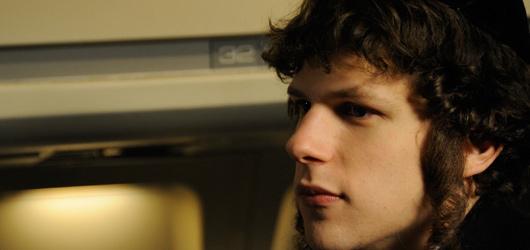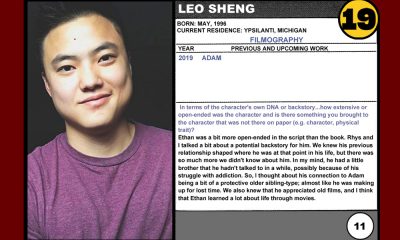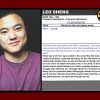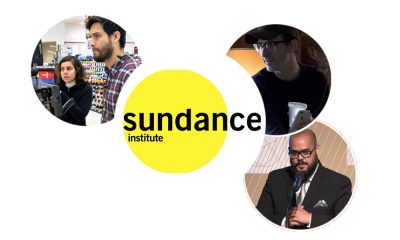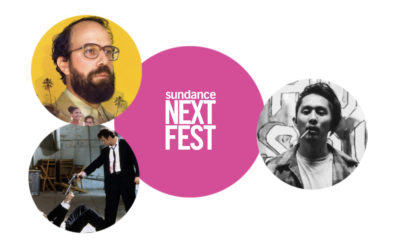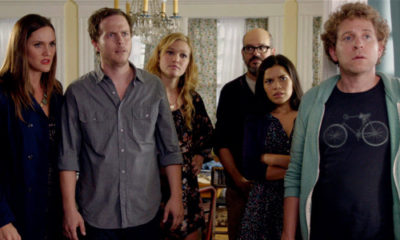Retro IONCINEMA.com
Sundance 2010: Interview with Kevin Asch (Holy Rollers)
I remember sitting in Danny’s apartment five years ago hearing him tell this true tale and his desire to make it into a Jewish-type “Goodfellas” and an ecstasy-esque “Blow” but I was immediately struck with the image of a naïve Hassid lost in the bright lights of a nightclub, plus me being Jewish and coming-of-age during the nineties in New York City, I instantly felt a personal connection.
Director Kevin Asch fleshes out the disparate outer worlds of Brooklyn’s Hasidic community and the drug scene in Amsterdam, while revealing the complex interior lives of his characters and the taut dynamics among them. – Sundance Festival Guide
Eric Lavallee: You had the benefit of having Jesse (Eisenberg) and Justin (Bartha) join the project very early on, I was wondering how you went about fleshing out these characters with them? And how much of an advantage is it for Antonio and you to have an established figure when conceiving the roles. Finally, what is your fav. performance from Jesse’s filmography?
Kevin Asch: Antonio and I spent a year on the script before Jesse first got attached, and Justin 6 months after that, so the characters were conceived before they were involved, but having them on early was a blessed benefit. It wouldn’t have been the same shooting script with other actors since they were so instrumental in pushing the material further along, and finding ways to enhance the story through character over plot. As a director, I am open and available to every idea, and trust my actor’s fully, and hopefully earn their trust early on.
Once Jesse was attached, I flew out to New York (where I’m from), and had the privilege of spending a lot of time with him workshopping scenes. He’s so funny and truly the kind of guy who makes you into a better person being around him. We’d talk endlessly about the film, but also about other things, just getting to know one another, and sniffing each other out creatively. We both took the subject matter very seriously, since it’s rooted in reality, but there is a lot of dramatic irony that comes with a fish out [of] water type story. We’re both big believers that great drama has comedy and vice versa. Levity allows the audience to relate to our complex characters and the extreme situation they’re in. When I was back in LA we would email and chat on the phone to discuss new pages and life. That went on for about two years and are, without question, some of my best memories of development. Justin and I had less personal time together, but the few times we’d meet to discuss the character, he came armed with fantastic ideas about the overall script.
By the time pre-production started, their voices were cemented in the material, but we continued to the push forward — as an example, Jesse and I went out to Boro Park, Brooklyn a few times for research, and the details we’d pick up would make their way into material; Justin and [he] also went a few times when I was location scouting and they came back extremely enthusiastic with more script ideas. These guys are also brilliant at improvisation and during rehearsals I gave them the freedom to do whatever they wanted, then made notes of the sessions and would put a lot of those improvisations into the revised shooting script. As the cast grew, I also kept Jesse involved in every decision, and he read with each day player then rehearsed with the additional principals, so they all understood the tone.
Ari Graynor was the last to come on, but she dove right in with these guys – her audition reading with Jesse and Justin was like a rehearsal with all of them improvising and deeply in the moment. Once she was cast, Jesse, her and I then spent the holidays rehearsing at my mother’s apartment as much as possible. Since it was Hanukkah, one night there was a Mitzvah Tank parked right outside and we went spent an hour chatting with a crew of teenage Hassid’s. When we first approached one of them, Jesse and I shook the young man’s hand, then Ari went to do the same but the young Hasid jumped back and said to Ari, “Oh, no, I can’t. It’s out of respect to you.” So that moment is now in the film when Justin introduces Jesse’s character to Ari’s character.
As for what is my favorite from Jesse’s filmography, what I said to him the first time we talked on the phone was, “I’ve been a big fan of yours for a while, and you’ve played me at least twice, as the eager-to-learn teenager in Roger Dodger, and as an obnoxious teenager going through divorce during the eighties in The Squid and the Whale.”

EL: Hassidic Jews as drug mules?! I was wondering what were the first ideas that you had when Danny A. Abeckaser first pitched the idea to you, and from there on…how did you decide you wanted to make this into a film?
KA: Everybody has that surprise reaction when they hear the concept, but the decision for me to make it into a film was easy. I remember sitting in Danny’s apartment five years ago hearing him tell this true tale and his desire to make it into a Jewish-type “Goodfellas” and an ecstasy-esque “Blow” but I was immediately struck with the image of a naïve Hassid lost in the bright lights of a nightclub, plus me being Jewish and coming-of-age during the nineties in New York City, I instantly felt a personal connection.
From there my curiosity was peeked with the intention to tell a morality tale about the lure of the drug world as it penetrates an insular, religious community. Danny agreed that the freshest way to approach the material was to tell an original crime drama through the eyes of a young Hasid recruited by his ‘Israeli drug dealer’ character. We were very careful to craft a film that accurately portrayed the details of Hasidic life. As storytellers, we never placed judgment on the decisions of our main characters or attempted to address the larger political arena of Hasidism or drug trafficking. We wanted to tell a very focused character-driven story from the point of view of our main character. I grew up reformed, Danny was raised Orthodox and most of the cast has Jewish roots, so we all brought a deeper curiosity and our own perspective, but ultimately our goal was to tell a universal story of faith – in anyone’s community, in one’s family and with close friends. When I brought on our writer, Antonio Macia, he connected with the story as a devote Mormon which influenced the universal nature of the story.

EL: What aesthetic decisions did you make prior to shooting?
KA: I always planned the style to be a mix of cinema verite and Italian neo-realism. Film aesthetics are incredibly important to me and something I take very seriously starting in development. I made a comprehensive look book early on, that has served as the creative blueprint for about two years leading up to pre-production. It helped me articulate and display some of my preliminary aesthetic intentions; the following are excerpts from that presentation: Visually the story is told in the first person. Sam’s (Jesse’s character) emotions and perspective motivate every shot and camera move. The overall color tones and lighting values change from dull to vivid in the same way ones perceptions are altered when high on ecstasy. The film’s dramatic use of light and shadows conveys Sam’s conflict with Brooklyn, which is a blend of comfort and despair. Sam’s vision of Manhattan & Europe is of as a dazzling, dangerous playground, while nightlife is both sexy and scary. Overall, the color scale becomes brighter as Sam leaves Brooklyn; colored filters, strobe lights, overexposing and backlighting bring the audience inside the chaotic club world and thus induce them to feel the same chaos as Sam. Ultimately, the hues come down in tone (like crashing after a high) when Sam returns to Amsterdam for the last time; blue tones emerge as Sam begins to feel his world falling apart, and gives the environment a cold look, creating a feeling of emptiness. Later, as Sam is forced to wander the dimly lit, unforgiving streets homeless, penniless, and miserable, the foreground is blurred, while the background is in focus; at this point, Sam is figuratively lost and has no idea where he is going.

EL: Anatomy of a scene: What was the most difficult sequence during production?
KA: Everyday was daunting, and we dealt with all sorts of brutal weather, but on the third day it literally rained ice. We planned to shoot a Hassidic Hanukkah celebration and wedding outside with 100 extras on the steps of a Brooklyn synagogue, but had to move the scenes inside the synagogue’s big chapel which we were not prepared to light. We already tech scouted this location where the blocking and shots were finalized, so scrambling to make those scenes work inside, on the day of production, was certainly very difficult.
EL: If I gave you an extra million for the production – what would you have done with it?
KA: I would have more productions days!
EL: You’re living the dream scenario: Independent filmmaker gets his debut feature film into Sundance, but you’re probably the most prepared 1st timer coming to the fest having touched just about every single area of film from conception to delivery. What advice would you give for a future first time filmmakers about directing your first film and then about preparing for a festival?
KA: Thank you very much. It’s definitely a dream come true. I’m sure everybody’s voice and process is slightly different, so my advice would be to not be afraid to figure that out for you and dive into the unknown. It’s important to remember that directing is discipline and every decision falls on you so be prepared. Lastly, if you don’t love it, don’t do it, otherwise you’ll hate it. I truly love every part of the process, and can’t wait to go again. I’m preparing for the festival by working on my next project with writer Antonio Macia.
Kevin Asch’s Holy Rollers is one of the 16 films selected in the Sundance Film Festival’s US Dramatic Competition.



